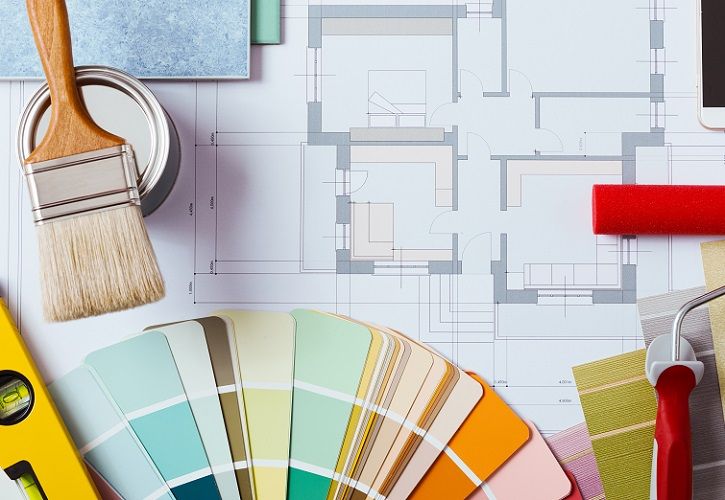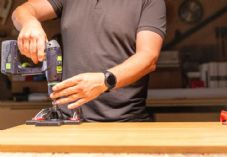UK DIY News
Checkout Finance: Home Improvements In Difficult Times

Tom Curtis, Account Director, Divido, talks about how checkout finance can help customers make home improvements during difficult times.
Rising inflation and increased mortgage rates has resulted in many people not being able to afford to move house. However, that hasn’t eradicated the need for people to upgrade inefficient or out of date facilities in their homes. As the cost-of-living crisis continues to bite, consumers are turning to new and smarter ways to finance home improvements.
According to Which?, one third of British households couldn’t afford to replace their boiler if it broke down. What’s more, over 3 million people in England are living in fuel poverty, unable to afford to switch their boiler on in the first place. The consequence is that these people may be unable to heat their homes by the time winter comes back around.
Checkout finance solutions can help break this cycle, enabling consumers to pay for home improvements in manageable instalments and helping them spread the cost over longer periods.
Unlike consumer-oriented Buy Now Pay Later (BNPL), checkout finance can be offered against higher-priced items. Repayment models can be adapted on a merchant-by-merchant basis, with both interest-free and interest-bearing options available, and repayment terms that go far beyond the standard pay-in-three or four model extending up to several months or years.
In a recent survey by Divido, 58% of consumers told us they believe checkout finance can help them to manage their personal finances. With checkout finance, they can make larger purchases than they might otherwise not be able to afford and pay them back in a way that suits their personal budgets.
This can be an enormous benefit to home improvement and DIY merchants. By giving consumers the means to access higher-value products, with credit underwritten by professional lenders, they can see increased sales and higher average transaction values (ATVs). At a time when consumers are facing lower purchasing power, this can help to protect merchants against the risk of declining sales in return for relatively small transaction fees to the lenders.
Finance, the responsible way
There are many other ways consumers can access finance for high-value items. According to our survey, credit cards remain the most popular means of consumer finance. Overdrafts and personal loans, while less popular than checkout finance, can also be included as options. But these forms of finance effectively penalise the consumer by charging high and often exponential interest rates. With many checkout finance lenders offering loans at 0% interest, it represents the fairest way to support consumers – especially those who fear falling into ‘debt spirals’, in which the accumulation of interest exceeds the pace they can repay the loan.
Retailers also have the opportunity to build customers relationships by offering checkout finance. By choosing a white label payment platform, merchants can appear to offer finance under their own brand name, while also gaining access to essential customer data that can be used for the purposes of remarketing. And, with access to their platform provider’s portals, they can gain real-time insights from the analytics of their finance programmes.
Businesses supporting customers during an economic squeeze
Our consumer research found that furniture and homeware and home installations represent the second and eighth most popular categories for total number of checkout finance users, respectively. Over a third (36%) of checkout finance users in Britain have used it to purchase furniture and homeware in the last three years, while 7.5% have used it to purchase home installations.
And within those categories, finance penetration tends to be very high. One of Divido’s clients in the home installations sector regularly sees finance penetration of over 40%, meaning two in every five customers chooses finance at their checkout.
With retail costs in the UK high and still climbing, it’s likely these percentages will increase over the next year as people look for effective new ways to manage their finances. As such, offering checkout finance options will be beneficial to home improvement merchants as a means of remaining competitive.
And it’s not just shoring up spending where checkout finance can benefit merchants. It can also be used to reduce basket abandonment rates, or even to incentivise consumers to spend more, either by choosing a premium option or by adding more to their baskets. 50% of consumers told us they would be more likely to complete a transaction if they saw checkout finance was available, while 54% said they would be inclined to spend more.
Checkout finance is a win-win for everyone involved. For consumers, they are paying in a way that gives them more control and for merchants, they can offer consumers more security in their spending while building stronger relationships.
Source : Tom Curtis - Divido
Image : shutterstock.com / 271173737
Thank you for the excellent presentation that you gave at Woodbury Park on Thursday morning. It was very interesting and thought-provoking for our Retail members. The feedback has been excellent.











































